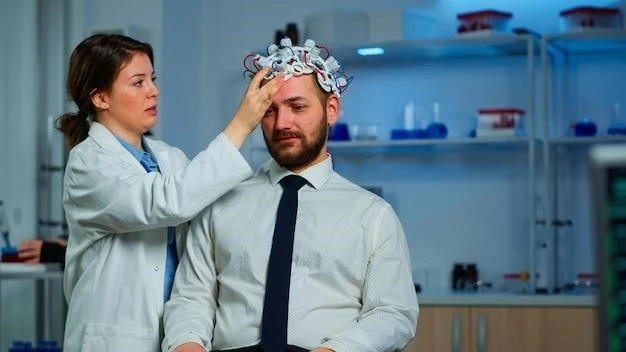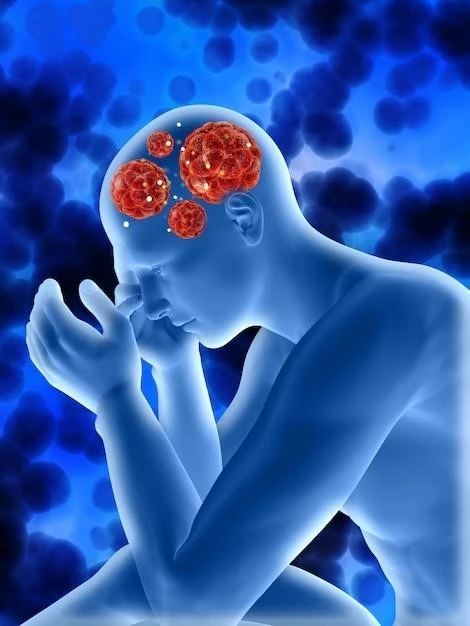Understanding Cerebral Gigantism
Introduction to Cerebral Gigantism

Cerebral Gigantism, also known as Sotos syndrome, is a rare genetic disorder characterized by excessive growth during the early years of life. It is a complex condition that affects physical development and cognitive abilities. Individuals with Cerebral Gigantism often experience rapid and accelerated growth, leading to an unusually large body size compared to their peers. This can result in various challenges and complications that require specialized medical attention and support.
Understanding the underlying causes, symptoms, diagnosis, and treatment options for Cerebral Gigantism is essential for providing comprehensive care to affected individuals. Research into the genetic factors associated with this condition continues to advance, shedding light on the intricate mechanisms that contribute to its development. By exploring case studies and the impact of Cerebral Gigantism on development, we can gain insight into the complexities of this rare disorder and work towards improved outcomes for affected individuals.
Causes of Cerebral Gigantism
The causes of Cerebral Gigantism, or Sotos syndrome, are primarily genetic. The condition is usually associated with mutations in the NSD1 gene, which plays a crucial role in regulating growth and development. These genetic mutations can result in the overgrowth characteristic of Cerebral Gigantism. In rare cases, the syndrome can be caused by mutations in other genes or may occur sporadically without a known genetic cause.
Furthermore, environmental factors may also play a role in the development of Cerebral Gigantism, potentially influencing the severity of symptoms. However, the primary driver of this rare disorder lies in the genetic abnormalities that disrupt normal growth processes, leading to the distinctive features associated with Cerebral Gigantism. Understanding the genetic basis of the condition is essential for accurate diagnosis and the development of targeted treatment strategies to address the underlying cause of this complex disorder.
Symptoms of Cerebral Gigantism
Individuals with Cerebral Gigantism may exhibit a range of symptoms that set them apart from their peers. These symptoms often include rapid and excessive growth during infancy and early childhood, leading to an unusually large body size. Other common symptoms of Cerebral Gigantism may involve developmental delays, such as delayed motor skills and speech development.
Moreover, individuals with this condition may experience intellectual disability, with varying degrees of cognitive impairment. Physical characteristics associated with Cerebral Gigantism may include a prominent forehead, a pointed chin, and distinctive facial features. Additionally, individuals with the syndrome may have behavioral challenges, such as impulsivity or social difficulties.
Understanding the spectrum of symptoms associated with Cerebral Gigantism is crucial for early detection, diagnosis, and intervention to optimize the quality of life for affected individuals. By recognizing these symptoms, healthcare professionals can provide tailored care and support to address the unique needs of individuals with this rare genetic disorder.
Diagnosis of Cerebral Gigantism
Diagnosing Cerebral Gigantism, also known as Sotos syndrome, involves a comprehensive evaluation that considers both physical characteristics and developmental milestones. Healthcare providers often initiate the diagnostic process by conducting a thorough physical examination to assess growth patterns, facial features, and neurological development.
Genetic testing plays a crucial role in confirming the diagnosis of Cerebral Gigantism by identifying mutations in the NSD1 gene or other relevant genetic abnormalities; In addition to genetic testing, imaging studies such as MRI scans may be performed to evaluate brain structure and rule out other underlying conditions.
Healthcare professionals rely on a multidisciplinary approach to diagnose Cerebral Gigantism accurately, involving geneticists, pediatricians, neurologists, and other specialists. Early diagnosis is essential for implementing appropriate interventions and support services to address the unique needs of individuals with this rare genetic disorder.
Treatment Options for Cerebral Gigantism
Treating Cerebral Gigantism, or Sotos syndrome, involves a multidisciplinary approach aimed at addressing the diverse needs of affected individuals. While there is no cure for the underlying genetic cause of the syndrome, treatment strategies focus on managing symptoms and optimizing development.
Early intervention is key in managing the symptoms of Cerebral Gigantism, with therapies such as speech therapy, occupational therapy, and physical therapy playing a crucial role in supporting developmental milestones. Educational interventions tailored to the unique learning needs of individuals with the syndrome can also enhance their quality of life.
Regular monitoring by healthcare providers is essential to track growth patterns, cognitive development, and overall health in individuals with Cerebral Gigantism. In some cases, medications may be prescribed to manage specific symptoms or complications associated with the syndrome.
By combining medical management with supportive therapies and educational interventions, healthcare professionals can help individuals with Cerebral Gigantism thrive and reach their full potential despite the challenges posed by this rare genetic disorder.
Impact of Cerebral Gigantism on Development
The impact of Cerebral Gigantism, or Sotos syndrome, on development can be multifaceted, affecting physical, cognitive, and social aspects of an individual’s growth. The rapid and excessive growth associated with the syndrome may lead to challenges such as motor coordination difficulties and delayed acquisition of developmental milestones.
Cognitive development in individuals with Cerebral Gigantism may be impacted, ranging from mild learning disabilities to more significant intellectual impairment. Communication difficulties, social skills deficits, and behavioral challenges are also common features that can influence an individual’s overall development.
Furthermore, the distinctive physical features of Cerebral Gigantism, including facial characteristics and body size, can affect self-esteem and social interactions, potentially posing additional challenges during development. Understanding and addressing the multifaceted impact of Cerebral Gigantism on development is essential for providing comprehensive care and support to individuals with this rare genetic disorder.
Case Studies, Genetic Factors, and Research Advances
Exploring case studies of individuals with Cerebral Gigantism provides valuable insights into the varied manifestations of this rare genetic disorder and the challenges faced by affected individuals and their families. By examining specific cases, healthcare professionals can learn from real-world experiences and tailor treatment approaches to meet the diverse needs of those with the syndrome.
Genetic factors play a pivotal role in understanding the molecular mechanisms underlying Cerebral Gigantism; Mutations in genes like NSD1 are commonly associated with the syndrome, highlighting the importance of genetic testing in diagnosis and personalized treatment planning. Ongoing research continues to uncover new genetic factors that contribute to the development of Cerebral Gigantism, paving the way for targeted therapies and interventions.
Research advances in Cerebral Gigantism focus on enhancing diagnostic methods, refining treatment strategies, and improving outcomes for affected individuals. Collaborative efforts between researchers, clinicians, and advocacy groups strive to deepen our understanding of the complexities of Cerebral Gigantism and drive innovation in the field of rare genetic disorders.
